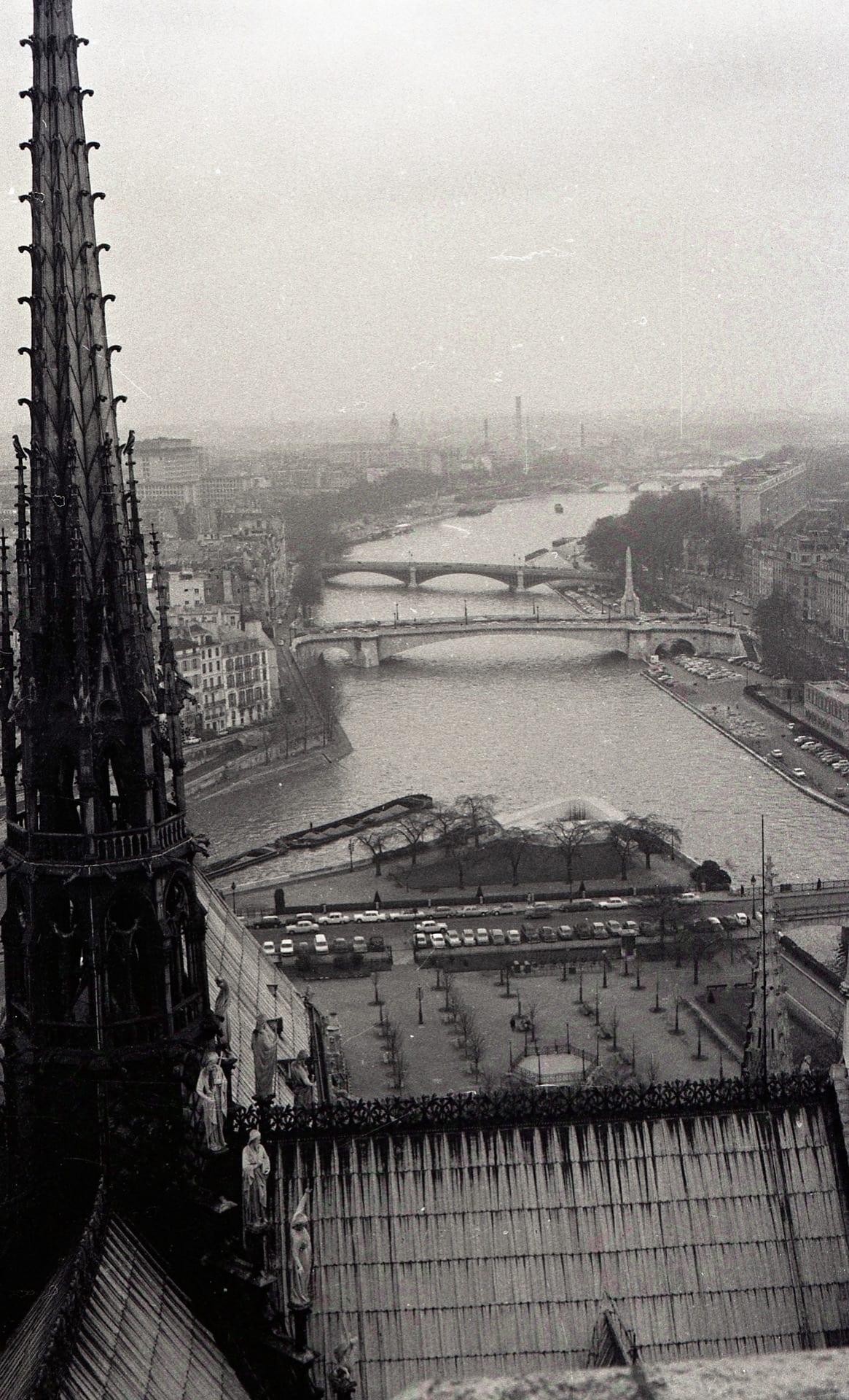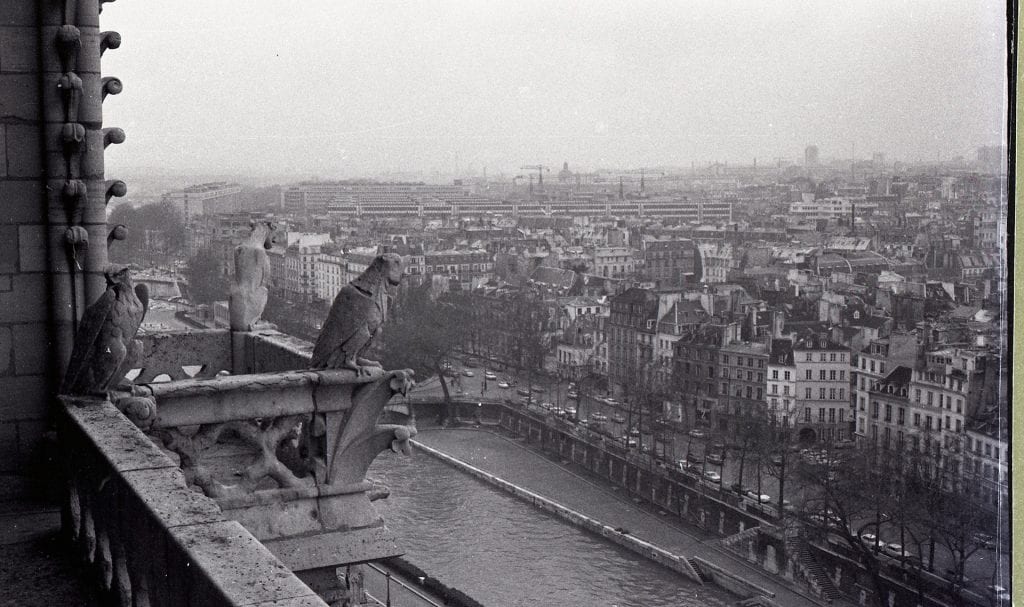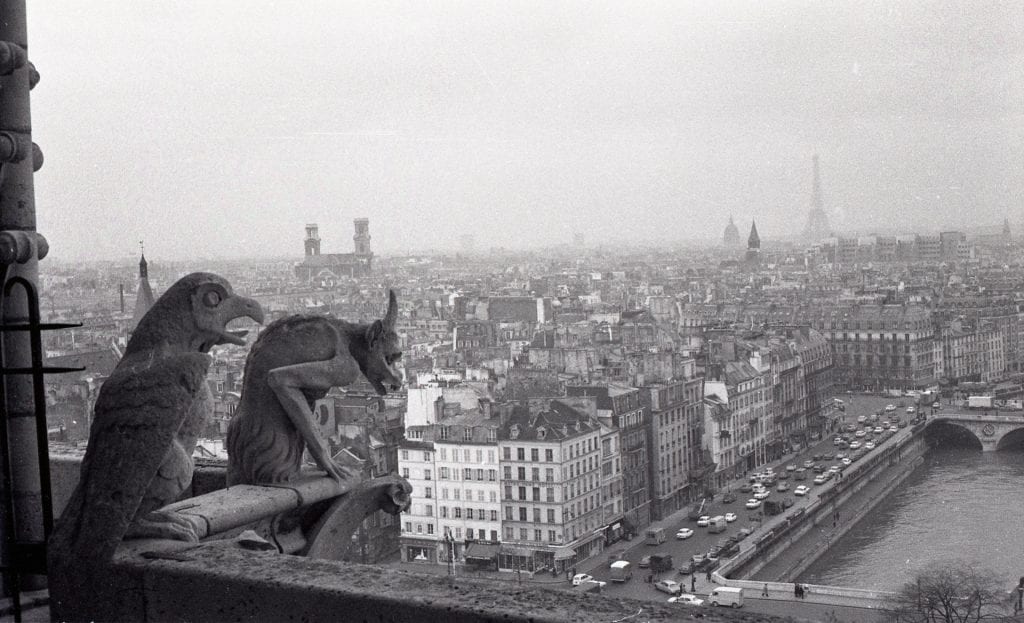Here is a view of the spire that collapsed with two thirds of the roof in today’s fire at Notre-Dame de Paris. The spire had been rebuilt in oak and lead under Viollet-le-Duc in mid-nineteenth century, with new statuary at its foot.

The western intrance to the cathedral often served as meeting point with family or friends, until crowds of tourists made it more difficult. One would enter through the western porch, walk along the nave toward the southern rosace, continue around the choir where some mass might be offered, and back through the northern part of the nave to exit under the buffet d’orgue rebuilt by Cavailhé-Coll in the nineteenth century. I was moved by the mystery of the place, the penumbra, the northern rose, no matter the hundreds and thousands of visitors from all over the world and the many languages spoken by people around me. And that is perhaps what was most striking: that in a world enthralled by economic success and moving fast away from the grasp of theologies, for the last two centuries, this place that had seen so many power plays could still sit like a question for tourists like me at the center of one of the great kingdoms and colonial powers of recent times. Notre-Dame de Paris can’t be separated in my mind from the much humbler sanctuaries scattered through the whole of Christendom. So, it has long been part and parcel of the development of the joined political powers of the church and monarchy. Yet, even as a ruin at the center of gleaming self-advertising modern structures, it still rises and invites reflection. Perhaps one day again, one will be able to go and listen to the great organ programs and improvisations offered every Sunday evening….



